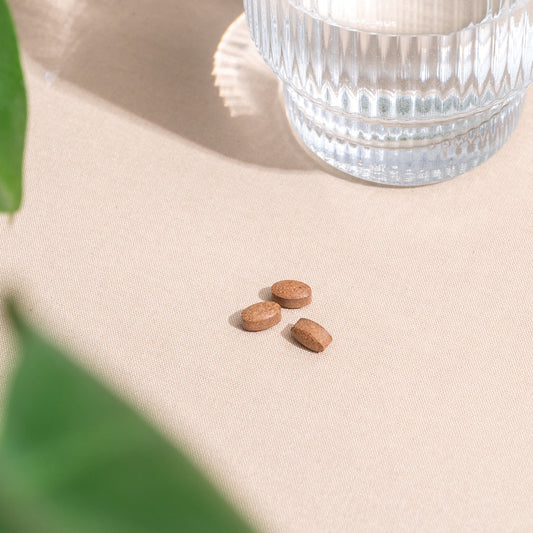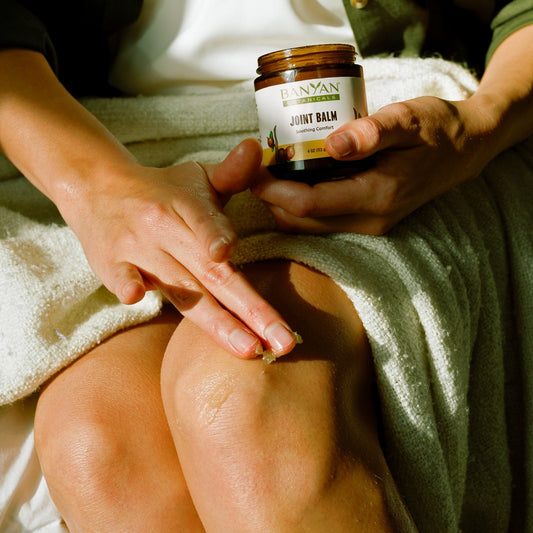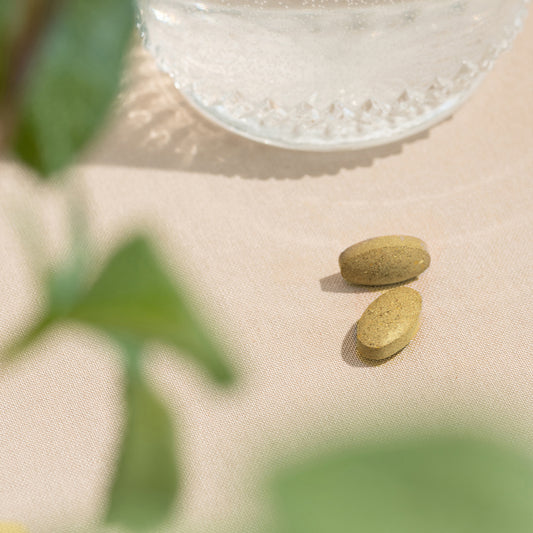In Ayurveda, spring is considered kapha season, due to the wet and cold qualities that predominate both the season and the kapha dosha. Common imbalances that occur during spring are often kapha-related, such as congestion, sinus discomfort, and feelings of lethargy, fatigue, and heaviness.
In the stomach, kapha regulates mucus production that soothes the intestinal lining and protects it from highly acidic foods. Similarly, kapha in the respiratory system produces mucus in an effort to protect the system and to prevent the sinuses from becoming too dry during winter.
However, as winter gives way to spring and the weather becomes wetter and heavier, these mucous mechanisms in our bodies that were beneficial during dry weather may become excessive once spring rains arrive.
Kapha and the Lymphatic System
One lesser-known aspect of kapha is its association with the lymphatic system. In Ayurveda, lymph is associated with rasa dhatu, the first tissue layer to be generated through the digestion of food. Rasa is the source of nutrition for every cell and tissue layer in the body.
An excess of rasa dhatu results in lymphatic congestion or stagnation, swelling, breast congestion, heaviness, and fatigue—all kapha disorders. According to Dr. Vasant Lad in his Textbook of Ayurveda, Volume 1, “Rasa is easily affected by kapha, because the by-product of rasa is kapha. 1
The lymphatic system is an important component of the immune system, comprised mainly of lymph vessels (similar to veins), which move lymphatic fluid throughout the body, as well as lymph nodes and glands, such as the tonsils, spleen, and thymus. The lymphatic system runs parallel to the venous (circulatory) system.
There are concentrations of lymph nodes in the armpits, breast tissue, neck, stomach, and groin. The brain also has its own lymphatic fluid. Unlike the circulatory system, the lymphatic system does not have a pump. The heart is the pump for the circulatory system while the lymphatic system relies solely on gravity, movement, and muscles to keep it flowing. This is why it is prone to congestion during sedentary periods.
The primary job of the lymph is to remove ama from the blood and other body tissues, therefore our body's ability to detoxify is related to lymph. When lymph flow is poor, the fluid can become thick and heavy (like kapha). 1
Signs of poor lymph flow can include:
- Phlegm
- Congestion
- Low agni, including slow or heavy digestion
- Fatigue
- Swelling, especially fingers, wrists, ankles, and feet
- Bloating, or weight gain
- Breast swelling with menstrual cycles
- Skin irritation
- Brain fog
- Unexplained soreness and stiffness, especially in the morning 2
Aside from hydrating well, one of the best things you can do to ensure your lymphatic system is working properly is to move your body. Because yoga encompasses various poses and levels of intensity, and it is easy to do on your own at home, it is an ideal way to get lymphatic fluid moving.
A yoga sequence that moves the lymph should include pranayama, vigorous movement, some inversion poses, and some twisting. End with a couple of poses that are useful for both cooling the body down and encouraging the proper flow of fluids throughout the body. The following are yoga poses you can do at home to get the lymphatic fluid moving.

Yoga for Moving Kapha and Lymph
Full Yogic Breath
Full Yogic Breath is a deeply balancing pranayama sometimes known as three-part breath because it works with three different sections of the torso and naturally engages all three lobes of the lungs. Full Yogic Breath revitalizes the entire body with prana. It benefits the vital organs, relieves stress, refreshes the mind, and activates the parasympathetic nervous system, encouraging a calmer, more balanced state of being overall.
Choose a comfortable seated or lying position. Full Yogic Breath begins with a deep and fluid inhalation that fills three sections of the torso. First, we breathe into the lower abdomen. Then, we breathe into the mid-section of the torso, expanding the diaphragm and the ribs as the inhalation continues. And finally, we draw the breath into the upper chest and shoulders as the inhalation comes to a close.
This slow and purposeful inhalation is then followed by a long, slow, gentle exhale, expelling the breath from these same three sections of the torso in reverse order, releasing the upper chest, then the diaphragm and ribs, and finally the lower abdomen.
This type of breathing massages the diaphragm and internal organs and activates the parasympathetic nervous system.
Sun Salutation (Surya Namaskar)
Sun Salutations are integral to the practice of yoga. The bending, lunging, and alignment of breath with movement all support blood and lymphatic flow. In addition, the activation of the core muscles when lowering to plank massages those deep lymphatic structures again.
For a lymphatic-focused practice, speed up the pace of your Sun Salutations and keep the movements vigorous. While Sun Salutes are ideal, feel free to do any vinyasa flow that you like, as long as you keep the pace lively and it involves moving the body in a variety of positions.
Standing Forward Bend (Uttanasana)
A short flowing sequence that is nice for moving lymph is to start in Tadasana (Mountain Pose), then fold all the way down to Uttanasana (Forward Bend) on the exhale. If you like, you can stay here for a few breaths on the first round.
On an inhale, come up halfway into Ardha Uttanasana (Half Forward Bend), exhale back down to Uttansana, and then inhale all the way up to standing. Hands together at the heart on the exhale. Repeat this 3-4 times, keeping a somewhat brisk pace, as tolerated.
The up and down movement can be difficult if you have low blood pressure; if so, come halfway up and pause before rising all the way to standing. Uttanasana is a simple inversion and you don't have to have your hands touching the floor during the Forward Bend if it isn't accessible for you.
Revolved Abdomen Variation (Jathara Parivartanasana Variation)
A twist is beneficial for lymph because the twisting motion squeezes the lymph structures within the abdomen, allowing greater flow once the twist is released. Revolved Abdomen Variation gives a good gentle compression to the digestive organs and accompanying lymphatic structures.
Please note: Those with back or hip injuries should approach this pose with care or under supervision of a trained professional. Modifications can be made with bolsters, blankets, or pillows to ease the intensity of the twist.
Start on your back with knees and feet off the floor at a 90-degree angle. With your arms out to your side and using your breath, lower your legs to the right into the twist. Try to keep both shoulders connected to the ground. Stay here for a few breaths and on the inhale, raise back to center and to the left.
Holding your knees and rocking up to sitting also massages the kidneys and adrenal glands.

Wide-Legged Forward Bend (Prasarita Padotanasana)
Wide-Legged Forward Bend is another beneficial pose: the wide stance opens the groin where lymph is concentrated and bringing the head below the heart allows the movement of lymph in the head, jaw, and chin areas.
This pose is grounding and stabilizing which also makes it good for balancing vata.
Start in Mountain Pose. Move to a wide stance with your toes turned slightly in. With the hands on the hips, exhale as you gently extend down into a forward bend. Hands can remain on the hips, or place them on the floor, blocks, or any other support that allows you to be in the forward bend with a long, extended spine. Move with your breath. As you inhale, rise up slightly, and fold a little deeper as you exhale.
Wide-Legged Forward Bend further massages the abdominal and pelvic organs.
Legs-Up-The-Wall (Viparita Kirani)
This pose is probably the most popular yoga pose for moving lymph. Because the lymphatic system is without a pump, one of the common places lymphatic fluid will get stuck is in the feet, ankles, and lower legs. Logically, this is one of the most difficult areas for the body to push the fluid, since the grade is very steep!
Lay on your back close to the wall (your buttocks should be as close as possible). Straighten your legs straight up the wall. Extend your arms out to your sides, palms up. Close your eyes. Hold this pose for several minutes.
Any Movement is Better Than No Movement
Just about any yoga practice is beneficial for lymphatic flow because movement and muscle contraction are what increases circulation and gets the fluid moving. However, adding some of these poses into your routine can give a little extra attention to the lymph nodes and organs of elimination.
Spring is an ideal time to incorporate these poses and principles into your practice and to keep your kapha happy during this kapha season!









